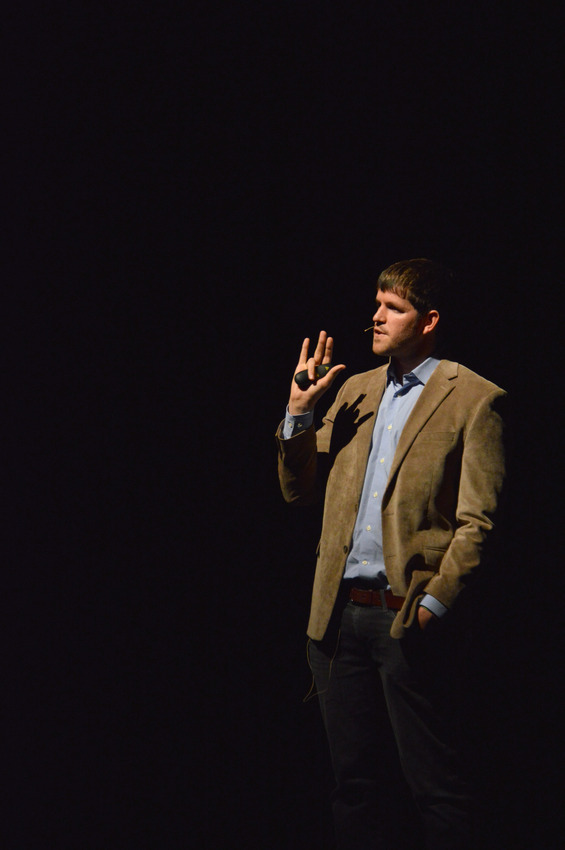Humans of New York creator, Brandon Stanton, visited Vanderbilt Tuesday, in the first event of the year hosted by Vanderbilt University Speakers Committee, in conjunction with VPB’s The VenUe.
Stanton recounted his journey from bond trader to photographer and storyteller behind Humans of New York. After opening remarks, Stanton answered questions posed by Professor Ifeoma Nwankwo, the director of the American Studies department and Associate Provost for Strategic Initiatives and Partnerships, as well as student audience members.
Stanton’s arrival on stage was met with warm and energetic applause from the packed auditorium.
“I’ve gotten to be very good at telling other people’s stories,” Stanton said before diving into his own story of personal growth and discovery.
Stanton spoke easily and candidly and thoughtfully about his experiences leading up to the creation of Humans of New York. He told of his early failures – flunking out of college – early successes that led him down the path he follows today.
He recounted how he always planned to do something prestigious and to make money first. Then, he would pivot and do what he wanted.
“And then one day, I got fired, and that was surprisingly a great day,” he said. Losing his job transformed the way he thought about his time and how he wanted to use it.
“Instead of using my time to make money, I wanted to make just enough money where I owned my most valuable resource, my time,” Stanton said.
Ultimately this new life choice paid off, and so did Stanton’s risky move to New York City. All along, he said, he focused on what he was doing that was different: taking photos of people on the street.
With photos and words, Stanton wove the story of Humans of New York’s evolution, from a photo of two boys on a train, to the idea for a series of photos of people plotted on a map, to the storytelling blog with over 22.5 million followers on Facebook and Instagram it is today.
“You cannot wait for the perfect idea,” Stanton said, “because that day will never come. As long as something remains in idea form, it cannot fail.”
For Stanton, simply taking people’s photos on the street was not the perfect idea, but it evolved. Now every photo is shared online with part of an interview with the individual. Often these interviews are deeply personal.
After conducting over 10,000 interviews in New York City and around the world, in Iran, Pakistan and elsewhere, Stanton said he has discovered people want to be heard, if only someone will listen.
He ended his opening remarks by encouraging the crowd to find a way to choose their work every day. His words were met by a standing ovation from the crowd.
Joined on stage by Professor Nwankwo for the Q&A, Stanton hinted at the TV series he intends to make with the 12,000 video interviews he has conducted in the last three years. He said he is confident that Humans of New York will continue to evolve and compel its audience by telling stories about people.
He and Professor Nwankwo also discussed how he struggles with hearing stories of tragedy and his inability to affect the narrative. Nwanko, proposed however, that storytelling itself provides utility in the dignity it grants people.
Still, Stanton said, he avoids assigning motives to Humans of New York, even positive ones. He does not try to push forward a certain narrative or argument.
“As soon as you assign a motive, you stop listening,” he said, and listening is at the core of Humans of New York.

